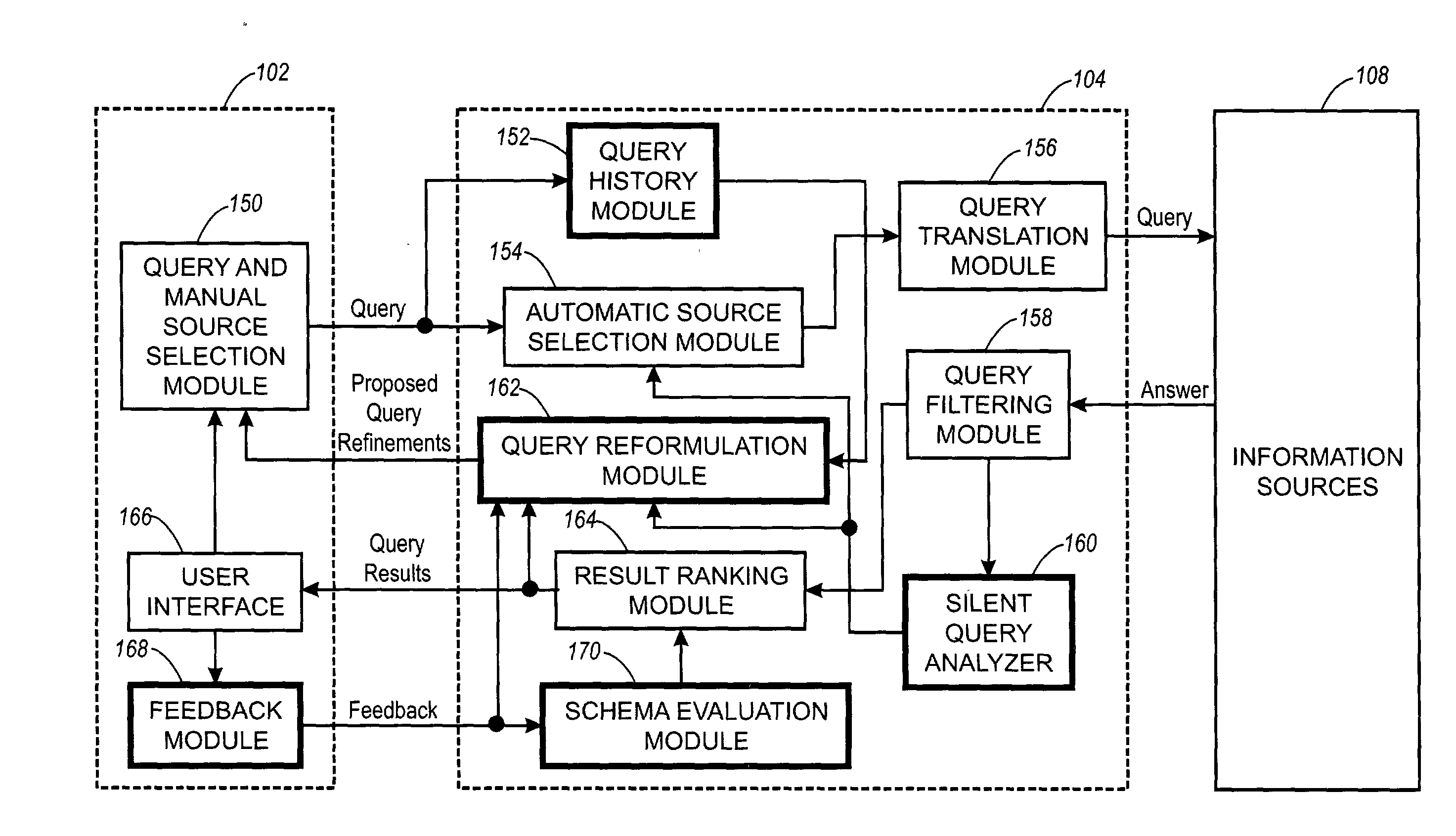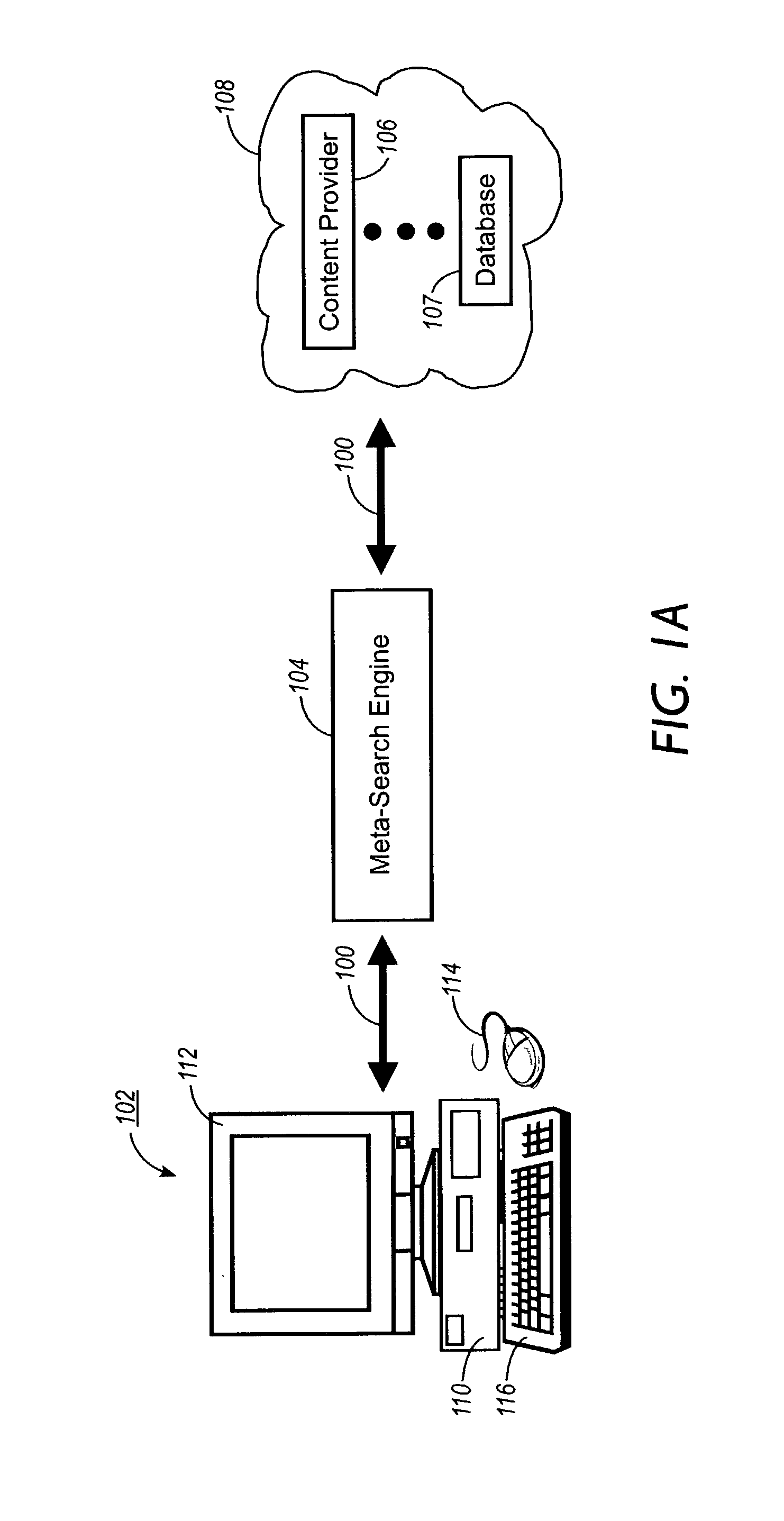System and method for improving answer relevance in meta-search engines
a meta-search engine and answer relevance technology, applied in the field of computer-based information retrieval, can solve the problems of inability to match the full content of documents, individual search engines are subject to certain limitations, and cannot match the true content of documents, so as to improve the answer relevance and improve the answer relevance
- Summary
- Abstract
- Description
- Claims
- Application Information
AI Technical Summary
Benefits of technology
Problems solved by technology
Method used
Image
Examples
first embodiment
[0045] Two embodiments of silent query analysis are presented below. In either embodiment, each operator subsumption can be characterized by a corresponding operator subsumption ratio "r". If an operator, referenced by the reference sign "O", in meta-search query "Q" is subsumed with an operator "O" that is considered to be understood by the selected source, and from the answer S' on query Q' returned by the selected source only a subset S remains after the post-filtering step, then in a first embodiment an operator subsumption ratio can be defined as follows:
[0046] r(O,O')=.vertline.S.vertline. / .vertline.S'.vertline..
[0047] In this first embodiment, the operator subsumption ratio r(O,O') can be evaluated as a mean over a sequence of subsumptions of the operator O. The operator subsumption ratio r(O,O') takes values from the [0,1] interval. The lower the operator subsumption ratio r(O,O') is, the worse the operator O' appears to be for subsuming the operator O. Thus, subsumption ana...
second embodiment
[0048] In a second embodiment, a query subsumption ratio r(Q) can be defined as follows for the entire query Q that contains a set of operators O.sub.1, O.sub.2, . . . O.sub.n (i.e., for a summation of the answers from all the selected sources):
[0049] r(Q)=.SIGMA..vertline.S.vertline. / .vertline.S'.vertline..
[0050] Similar to the operator subsumption ratio r(O,O'), if a query subsumption ratio r(Q) falls below a predetermined threshold value, the entire search query should be reconsidered so as to reformulate it in order to improve the search answers in a subsequent search query. Thus, a low query subsumption ratio r(Q) for query Q means that a large part of documents received from information sources were filtered out and / or down-weighted before being transmitted to the user.
[0051] In either embodiment, the subsumption ratios may provide an immediate indication for a user or the system to modify the query in order to avoid a low query subsumption ratio. In one embodiment, the meta-s...
PUM
 Login to View More
Login to View More Abstract
Description
Claims
Application Information
 Login to View More
Login to View More - R&D
- Intellectual Property
- Life Sciences
- Materials
- Tech Scout
- Unparalleled Data Quality
- Higher Quality Content
- 60% Fewer Hallucinations
Browse by: Latest US Patents, China's latest patents, Technical Efficacy Thesaurus, Application Domain, Technology Topic, Popular Technical Reports.
© 2025 PatSnap. All rights reserved.Legal|Privacy policy|Modern Slavery Act Transparency Statement|Sitemap|About US| Contact US: help@patsnap.com



